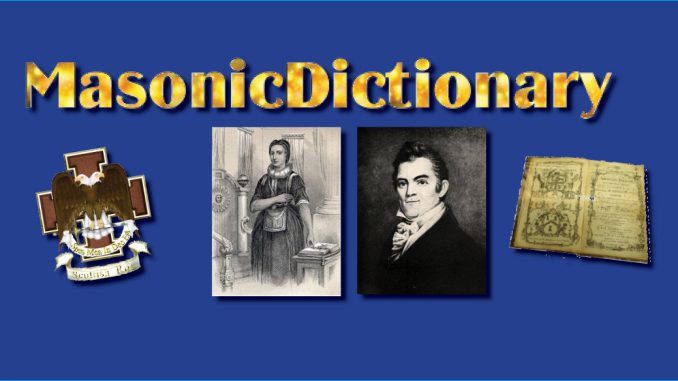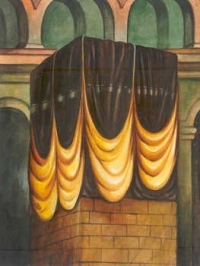
 The name of the holy temple of Mecca, which is to the Mohammedans what the Temple of Solomon was to the Jews.
The name of the holy temple of Mecca, which is to the Mohammedans what the Temple of Solomon was to the Jews.
It is certainly older, as Gibbon admits, than the Christian era, and is supposed, by the tradition of the Arabians, to have been erected in the nineteenth century before Christ, by Abraham, who was assisted by his son Ishmael.
It derives its name of Kaaba from its cubical form, it being fifteen feet long, wide, and high.
It has but one aperture for light, which is a door in the east end. In the northeast corner is a black stone, religiously venerated by the Muslim, called “the black stone of the Kaaba,” around which cluster many traditions.
One of these is that it came down from Paradise, and was originally as white as milk, but that the sins of mankind turned it black; another is, that it is a ruby which was originally one of the precious stones of heaven, but that God deprived it of its brilliancy, which would have illuminated the world from one end to the other.
Syed Ahmed, who, for a Mussulman, has written a very rational history of the Holy Mecca (London, 1870), says that the black stone is really a piece of rock from the mountains in the vicinity Mecca; that it owes its black color to the effects of fire; and that before the erection of the temple of the Kaaba, it was no other than one of the numerous altars erected for the worship of God, and was, together with other stones, laid up in one of the corners of the temple at the time of its construction.
It is, in fact, one of the relics of the ancient stone worship; yet it reminds us of the foundation-stone of the Solomonic Temple, to which building the temple of the Kaaba has other resemblances.
Thus, Syed Ahmed, who, in opposition to most Christian writers, devoutly believes in its Abrahamic origin, says (on page 6) that “the temple of the Kasba was built by Abraham in conformity with those religious practises according to which, after a lapse of time, the descendants of his second son built the Temple of Jerusalem.”
– Source: Mackey’s Encyclopedia of Freemasonry
